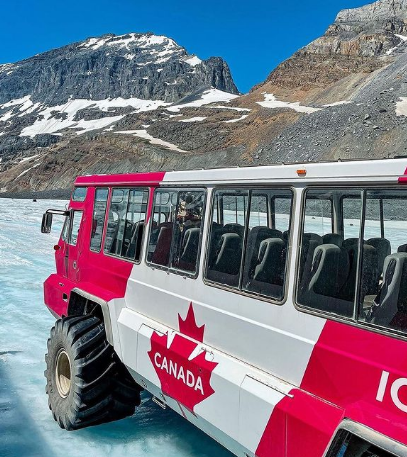Most Populated Cities of Canada: Ranked as the world’s second-largest country in terms of area, only behind Russia. Around 35 million people live in the country with over 100 ethnic origins. The population density in Canada is much lower than its neighbor, the USA, which is why Canada holds one of the top spots for the least densely populated countries in the world.
Canada has a parliamentary system within a constitutional monarchy. It is divided into ten provinces and three territories. There are various types of governing systems that exist throughout these divisions, including federalism and direct democracy.
Cities in Canada have been growing steadily for many years now, mainly due to immigration from other countries worldwide. Canada’s capital is home to 1.32 million people, while the largest city in Canada, Toronto, has a population of 2.7 million.
The top ten most populated cities in Canada are:
1 . Toronto, Ontario
2 . Montreal, Quebec
3 . Vancouver, British Columbia
4 . Calgary Alberta
5 . Ottawa Ontario
6 . Edmonton Alberta
7. Winnipeg Manitoba
8. Hamilton Ontario
9. Brampton Ontario
10. Kitchener-Cambridge-Waterloo in Ontario
Due to World War II, the majority of Canadians now reside in metropolitan areas. Increasing densities and shrinking boundaries have forced municipal governments to find a middle ground in their efforts to maintain housing costs as low as possible. Many techniques and concerns may be seen throughout Canada’s ten largest cities.
Data on all populations is based on the 2016 census rather than a broader region that includes Canada’s metropolitan areas (CMA).
Even though Canada is the world’s second-largest country with an area of around 3.8 million square miles (9.9 million square kilometers), the country’s population is expected to be 37.8 million people in 2020. The population of the northern country is around 294 million fewer than the population of the United States, its southern neighbor.
Some regions have more people than others and so have a larger overall population than others. Ontario is the most populated province in Canada with 14.6 million residents, followed by Quebec, 8.5 million. The third-largest area in Canada is British Columbia, which has a population of 5.1 million.
The prairie provinces—Alberta, Manitoba, and Saskatchewan—place fourth, fifth, and sixth, respectively, even though Alberta has a population of 4.4 million. In contrast, the latter two have populations of 1.3 and 1.1 million, respectively. There are fewer than a million people in each of the four eastern provinces: Nova Scotia, New Brunswick, Newfoundland, and Prince Edward Island. It has no more than 50,000 people in Canada’s three northern territories.
There are 6.2 million people in the city of Toronto, Ontario-Most Populated Cities of Canada
More than 6.2 million people call Toronto, Canada’s largest metropolis, home. The Greater Toronto Area (GTA) encompasses the city’s neighboring suburbs (GTA). It has become the fourth-largest city in the United States in the last decade. Since the 1950s, Toronto has risen in population, becoming one of Canada’s most populous cities and a major economic center. An important factor is the influx of newcomers, which has given rise to distinct neighborhoods such as Greek Town, Little Jamaica, and China Town. Thanks to these neighborhoods, Toronto has been a popular location for immigrants and their families throughout the years.
Quebec’s capital city, Montreal, has a population of 4.2 million people.
In terms of population, Montréal is the second-largest city in Canada after Ottawa. It was ahead of Toronto in population for a while, but the latter reclaimed the lead in the 1970s. In part due to the pro-sovereignty movement that took hold during this period, Toronto’s population has grown significantly over the past few decades. Due to this, its population has been declining at a slower rate than the national average. Interprovincial and national migration are two aspects that contribute to the problem. Because of its role in French culture, Montreal has remained a significant Canadian metropolis.
Canada’s capital city of Vancouver, 2.6,000,000-Most Populated Cities of Canada
Vancouver, British Columbia, is Canada’s third-largest city, with slightly under 2.6 million. As the vastly populated city in the United States, it has 13,590 inhabitants per square mile (5,249 per square km). Large influxes of people, notably from Asian nations across the Pacific, have played a significant role in the city’s growth as an urban center. In recent years, the population from all around the world, drawn to the town for various reasons, such as closeness to family or newly established roots, have helped to convert it into a melting pot of cultures.
With a population of 1.5 million—Calgary, Alberta
Calgary is Canada’s fourth-most populous city, with a population of around 1.5 million. When the Canadian Pacific Railway passed through the area in the late 1800s, it ushered in a new era of agricultural prosperity. In 1914, the government offered free “homestead” land as an inducement to potential ranchers and farmers as a method of boosting the local economy, but the population didn’t rise until then. In the early twentieth century, oil was discovered in Calgary, giving the city a second impetus thanks to another vital resource.
Edmonton, Alberta, has a population of around 1.4 million-Most Populated Cities of Canada.
Edmonton is the capital of Alberta, with a population of just over 1.46 million. It was the last of five Hudson’s Bay Company trade stations in the area when the city was first established. Later the arrival of the Canadian Pacific Railway, the population of the region grew significantly. It plummeted following World War I, but it has since rebounded and is on the rise again. Between 2006 and 2011, Edmonton’s population expanded by more than 12%, far more than the national average of 5% when it comes to population growth.
The population of Mississauga, Ontario, is 721,599 people.
Mississauga (Ontario) is located in the western part of the Toronto metropolitan area with 688,549, increasing by 4.7%, making it Canada’s sixth-most populous city. It is known for its growth in the high-tech industry and other industrial sectors. It is becoming one of the most culturally diverse cities where people can shop at ethnic stores, including African, Italian, and the Caribbean. There are also many different festivals where visitors can attend and learn about other cultures in Canada. On Ontario lakeshores, a new community is being built on the ruins of two abandoned industrial sites. The most extensive mixed-use advancement in Canadian history is located north of these locations.
Winnipeg has a population of 704,224 people-Most Populated Cities of Canada
Winnipeg is the capital and largest city of the province of Manitoba in Canada. It is located near the longitudinal center of North America, at the confluence of the Red River and Assiniboine River.
The city is named after the nearby Lake Winnipeg; the name comes from the Western Cree words for muddy water. The region was a trading center for Aboriginal peoples before the arrival of Europeans. The first fort was built there in 1738 by French traders.
Increased demand for public transportation can occur when a city’s population expands. With an app and GPS, Winnipeg is experimenting with on-request transportation, which employs a smartphone app and real-time route adjustments. One of the greatest and complex aspects of providing public transportation in a community is keeping it running during non-peak hours.
Vancouver has a population of 631,486.
In addition to being the third-largest English-speaking city after Toronto and Montreal, it has an ethnically diverse population: 52% of its residents have European ancestry, but there are large numbers of Chinese, South Asians, and Blacks. In recent years, many immigrants have come from Hong Kong, Taiwan, China, India, Vietnam, and the Philippines. As well as over half a million native speakers of English, Vancouver also has 145,000 French speakers.
In the last few decades, a growing number of international investors have been acquiring homes in Vancouver. Residents had a hard time finding a place to live in their city as costs climbed. After a 15 percent property transfer tax was enacted in 2016, the town also imposed an “empty home tax.”
593,638 people live in Brampton-Most Populated Cities of Canada.
In 1976, Brampton had 103,459 inhabitants, and in 1991, it had 234,445 people. Even though urban borders expanded in the 1990s, basement flats (sometimes referred to as “secondary units”) have played a significant role in the growth. As many as 30,000 to 50,000 more secondary units are estimated to exist in Brampton, even though only 7,000 of them have been registered. Basement apartments have been permitted and regulated in all Ontario municipalities since 2012.
Hamilton’s population of 536,917.
About a quarter of a million individuals are predicted to move to Hamilton by 2051. According to the city’s planning office, farmland should be included in the city’s “urban growth area” in 2021. The project drew an estimated 19,000 public comments, according to planners. Province-mandated urban limits can be enforced on municipalities in Ontario until July 2022.
Before becoming a city in 1846, it was a town with a population of only 20 people! In fact, at that time, only about 2200 people were living in all of Upper Canada, as one called Ontario back then. Nowadays, it is “the best place to raise a child.” Its nickname is ‘The Hammer.’
In 2009 its unemployment rate was 14.8%, which is very high compared to other cities in Canada. However, this has been improving over the years and now sits around 9. It means that there are more jobs available in Hamilton now!
Hamilton was the first industrialized city in Canada. Industries related to steel production are still prevalent, but now there are many hi-tech companies as well. The five largest employers are now Stelco, Dofasco, ArcelorMittal Sidenor, Ainsworth Engineered Products, and Linamar.
Trends in Population Size in the Future-Most Populated Cities of Canada
However, the rankings of each province are likely to remain the same for the next twenty years, notwithstanding population growth. City-level issues may also be relevant.
As of 2018, census metropolitan regions had a population of 26.5 million. Experts predict that urban growth will continue to outpace the rest of the country for the foreseeable future. It is estimated that by the middle of the 2030s, the population of Toronto proper (excluding the GTA) would have grown to 3.2 million people. Vancouver is expected to overtake Montréal in population, while Edmonton’s population is expected to rise at a very great pace that the city will require additional acreage to accommodate the growth.
Despite this, data shows that the five most rapidly expanding cities in the country are not listed below. To begin with, they’re all in Ontario’s heartland. The national capital region (commonly known as the Ottawa-Gatineau region) comes in third on the list. Out of all of Canada’s largest cities, only Edmonton makes the list of 10 fastest-growing cities.
Populations are dynamic and ever-evolving entities. Immigration trends, better transportation, and the economy are just a few of the factors that have helped these five cities rise to the top of the country’s most populated list. Even if their numbers are expected to rise in the future, they are not expected to expand at the fastest rate, so we’ll have to wait and see how this list appears in a century.
Conclusion
Canada’s population, which is among the world’s most significant, comprises provinces, territories, and a wide variety of cities. A total of 10 provinces make up the country’s three territories. As a result of their division, these regions can exert control over certain parts of the country.
Each province has its explanation of what it means to be a “city” in Canada. For example, in Alberta, a city must have at least 10,000 people and several additional requirements, such as the region’s land parcel size and the number of structures in the area. A city can be defined as one with more than 5,000 in British Columbia, regardless of whether this figure falls in the future. Greenwood, a city in British Columbia, has a population of fewer than 1,000 since it originally had a considerably bigger population. City names don’t even exist in Quebec. The whole province comprises “villes,” or cities or towns that aren’t measured by size, although the province does have distinct municipalities.
Two-thirds of Canadians live within a radius of 100 kilometers of only a few major cities. Concerning the 2011 Canadian census, there are 33 CMAs and 114 agglomerations in Canada. Even further, according to census statistics, 1,137 municipalities across the nation were classified as cities, towns, or villes.
Recommended Reads
- Interesting Facts of Canada: Top 24
- Major Cities in Africa-Top 10
- Best Places to Go in December for Vacation-Top 15
- Big Cities in Africa-Top 10
- Best Places to Go on Christmas Holiday-Top 26
- The 15 Best Winter Coats for Women 2021


